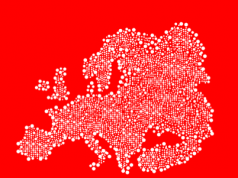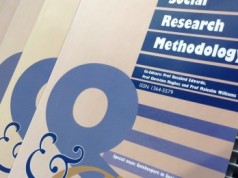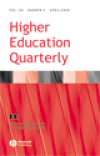 Author: Luci Pangrazio
Author: Luci Pangrazio
The call for new frameworks to understand the increasing complexities of the contemporary digital context is not new. Innovative approaches to the digital have given rise to design literacies, the maker movement and coding, which are now integrated into many educational and community programs. Yet as the tensions of the digital era have become more ubiquitous and pronounced, researchers and practitioners from a variety of disciplines are exploring the challenges and opportunities that emerge from using digital technologies.
Contemporary art has been at the forefront of this. This blog post introduces the idea of using contemporary art as a way of exploring the increasing digitisation of everyday life. Through this framework, art becomes a relay through which to de-familiarise, problematise and reimagine our relationship to digital technologies. In this way, the experimental, ambiguous and indeterminate qualities of contemporary art can be used to rebut the certainties of binary code and its relationship to capital.
Digital technologies are pervasive and ubiquitous to everyday life in the western world. Not only are mobile technologies on the rise, but so too are computing and social software which are embedded in objects, space and all manner of social interactions. Greenfield (2006) uses the umbrella term ‘everyware’ to describe the paradigmatic shift toward technologies that are pervasive, ubiquitous, sentient, tangible and wearable. These technologies are invested with some decision-making capacity in order to facilitate the completion of everyday tasks. It is through the rhetoric of efficiency and empowerment that these technologies are constructed in the popular imagination.
At the same time, the software that now underwrites social and cultural processes (Manovich, 2013) and the semiautomated technologies which code space (Kitchin & Dodge, 2011) are so effectively woven into everyday life that they are disappearing from view. As such, we only become conscious of digital technologies when they are not working. While a seamless interface might improve functionality, it also makes the critical questions associated with the digital harder to address. How can the impact of digital technologies be assessed if they cannot be seen or sensed?
While design based approaches to digital technologies could be generally described as focused on technical mastery and more imminent forms of critique, contemporary artists take quite a different approach to their inquiry into the digital. Claire Bishop (2012) argues that many artists have been slow to take up the challenge of exploring the digitisation of everyday life. Despite this, digital technologies underwrite many aspects of the artistic process – from the software that produces films and materials for production, to the promotion of an artists’ profile – the digital often enables or constrains outcomes.
Bishop contends there are several reasons for this, not least the ‘fascination’ (Bishop, 2012, p.436) that many artists have with analogue media. But the digital also raises questions about how the aesthetic ‘object’ operates within the paradigm of contemporary art. Most specifically, how can the conceptual challenges of digitisation – distributed and collaborative as it is – be explored in the traditional format of the exhibition? Jack Burnham’s (1968) notion of ‘unobjects’ announces a paradigmatic shift from finite objects bounded by material limits to a more conceptual, systems approach toward art, focusing on ‘the relations between people and between people and the components of their environment’ (p.31).
Following on from this, social, spatial, participatory and interventionist practices work in context, expanding and extending beyond the ‘white cube’ of the gallery. Nevertheless, the role of the gallery in contemporary art is still a powerful one. Part of the appeal lies in the fact that the gallery is free of context, so that ‘time and space are thought to be excluded from the experience of the artworks’ (Sheikh, 2009, n.p.). As Sheikh (2009) explains this ensures that the gallery space remains an important ideolgocial site for ‘commodity fetishism’ and the creation of ‘eternal value(s)’ (n.p.).
When it comes to methods of production, digital tools and technologies have introduced new materialities, processes and values for contemporary artists to negotiate. In considering how art might explore the digital, several tensions and challenges emerge. First, digital technologies are becoming increasingly immaterial and invisible, and appear to be given purpose and functionality in a particular social, cultural or spatial context. By contrast contemporary art is based around the creation of an aesthetic object, most often appraised in the gallery, the museum or the spectacular biennale or festival. The most valued and spectacular works are stripped of context and without relation to their geographical or cultural contexts. Sure curators will write the work into place but as Hito Steyerl (2012) argues the spectacular event exhibition is now nothing more than a bulwark for neo-liberal capital. Hence every city awakening itself to the logic of semiocapitalism (Berardi, 2009) wants a biennale, to map itself into the global cultural space.
However, unlike digital representations, there is no motivation for contemporary art to create endless variabilities and reproductions of itself. In this way, the digital’s capacity to recombine and reproduce images can be contrasted against the one-off limited edition approach propagated by the gallery, museum and biennale, a distinction which ensures the commodification of contemporary art. Broad distinctions can also be made between the machinic processing that takes place through digital technologies and the human interpretations that are the hallmark of the gallery experience. Through the framework of contemporary art the digital is de-converged, de-contextualised and de-celerated, forcing an interpretive engagement not offered when these technologies are encountered in everyday life.
Creative approaches to exploring, understanding and critiquing the digital will be added to the ‘Art as Digital / Digital as Art’ blog page authored by Luci Pangrazio (see: https://art-as-digital-as-art.com) This blog will explore approaches to the digital offered by several contemporary artists. The aim of this blog is to compliment current theories and approaches to understanding the social effects of digitisation.These artworks prompt the viewer to see the digital with a fresh perspective and without the contextual framing that normally obscures more complex and critical understandings. The first blog post is entitled materialising the digital, but other posts will soon follow based on topics like: surveillance; the postdigital; the politics of data; and social media and identity.
Audio/visual: ‘White Cube’, FreeImage.com/Svilen Milev
References
Bishop, C. (2012). Digital divide: Claire Bishop on contemporary art and new media. Artforum, September, 434-442.
Berardi, F. (2009). The Soul at Work: From Alienation to Autonomy: Los Angeles, CA: Semiotext(e).
Burnham, J. (1968). System esthetics. Artforum, September, 30-35.
Greenfield, A. (2006). Everyware: The Dawning Age of Ubiquitous Computing. Berkeley, CA: New Riders.
Kitchin, R., & Dodge, M. (2011). Code/Space: Software and Everyday Life. Cambridge, Massachusetts: MIT Press.
Manovich, L. (2013). Software Takes Command. New York and London: Bloomsbury
Sheikh, S. (2009). Positively white cube. e-flux, 3(2). Retrieved from http://www.e-flux.com/journal/positively-white-cube-revisited/
Steyerl, H. (2012). The Wretched of the Screen. Berlin, Germany: Sternberg Press.







